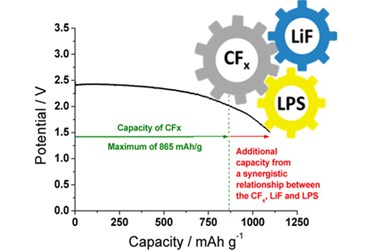Batteries For Implantables That Could Last For Decades
By Joel Lindsey

Researchers at the Department of Energy’s Oak Ridge National Laboratory (ORNL) have developed a new battery chemistry that could significantly increase the lifespan of batteries — a development that could carry important implications in the field of implantable medical devices.
“If you have a pacemaker, you don’t want to undergo surgery every 10 years to replace the battery,” Chengdu Liang, a scientist at ORNL who is involved with the project, said in a press release published recently by the lab. “What if a battery could last 30 to 50 years? Our fundamental research is opening up that possibility through a new design mechanism.”
Traditionally, batteries have been comprised of three main components: the positive cathode, the negative anode, and an ion-conducting electrolyte. In the new battery design, the electrolyte has been chemically altered, so it can serve as both an ion conductor and a cathode supplement.
More specifically, the team manipulated lithium thiophosphate, turning it into a solid electrolyte through a process called nanostructuring. In its solid state, the electrolyte can conduct ions 1,000 times faster than it can in its natural form, according to a news article on ORNL’s website.
According to Liang, this dual-function electrolyte interacts with the cathode in very important ways.
“As the battery discharges, it generates a lithium fluoride salt that further catalyzes the electrochemical activity of the electrolyte,” he said. “This relationship converts the electrolyte — conventionally an inactive component in capacity — to an active one.”
With the electrolyte performing dual functions, the new batteries generated power at a 26 percent higher capacity than traditional batteries. Researchers believe this increase in capacity could ultimately translate into additional years of battery life — maybe even decades.
“This bifunctional electrolyte revolutionizes the concept of conventional batteries and opens a new avenue for the design of batteries with unprecedented energy density,” the team wrote in an article it published recently in the Journal of the American Chemical Society.
In particular, researchers see the new batteries as being a potentially important development in the field of implantable medical devices, as well as several other electronic device applications.
This project is one of many working to improve how implantable medical devices are powered. Earlier this month, for example, Med Device Online reported on the ongoing research and development of tiny power generators capable of using the natural movements of a beating heart or a breathing lung to create enough electricity to power implantable devices such as pacemakers, defibrillators, or heart-rate monitors.
Image Credit: ORNL
